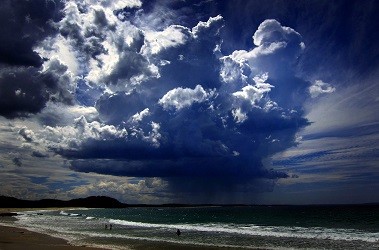
Weather prediction is not a recent phenomenon, but is a 3,500 year-old trend followed by ancient Egyptians and probably one of the world's oldest weather reports, according to a new finding.
A new translation of the 40-line inscription on a tall stone block from Egypt called Tempest Stela suggests darkness and rain during those days.
Scientists believe that the inscription could give new evidence about the events that occurred in the ancient Middle East.
However, some researchers consider the content on the Tempest Stela to be a metaphorical document that illustrated the impact of the Hyksos invasion.
Nadine Moeller and Robert Ritner, two post-doctoral scholars of University of Chicago's Oriental Institute, after examining the inscription believed that the unusual weather pattern depicted on the stone were as a result of an immense volcanic eruption at Thera, which is today's island of Santorini in the Mediterranean Sea.
"This is important to scholars of the ancient Near East and Eastern Mediterranean, generally because the chronology that archaeologists use is based on the lists of Egyptian pharaohs, and this new information could adjust those dates," explained Moeller in the article published in the Journal of Near Eastern Studies.
The Tempest Stela dates back to the reign of the pharaoh Ahmose, the first pharaoh of the 18th dynasty.
The new information would provide an improved understanding of the role of the environment in the destruction and development of empires in the ancient Middle East.
"In addition to the Tempest Stela, a text known as the Rhind Mathematical Papyrus from the reign of Ahmose also makes a special point of mentioning thunder and rain, which further proved that the scholars under Ahmose paid close and particular attention to matters of weather," said Ritner.
Until now, the evidence found for Thera eruption didn't match with radiocarbon dating, explained Felix Hoeflmayer.
To see the The Tempest Stela of Ahmose, click here
(Edited by Anu James)









